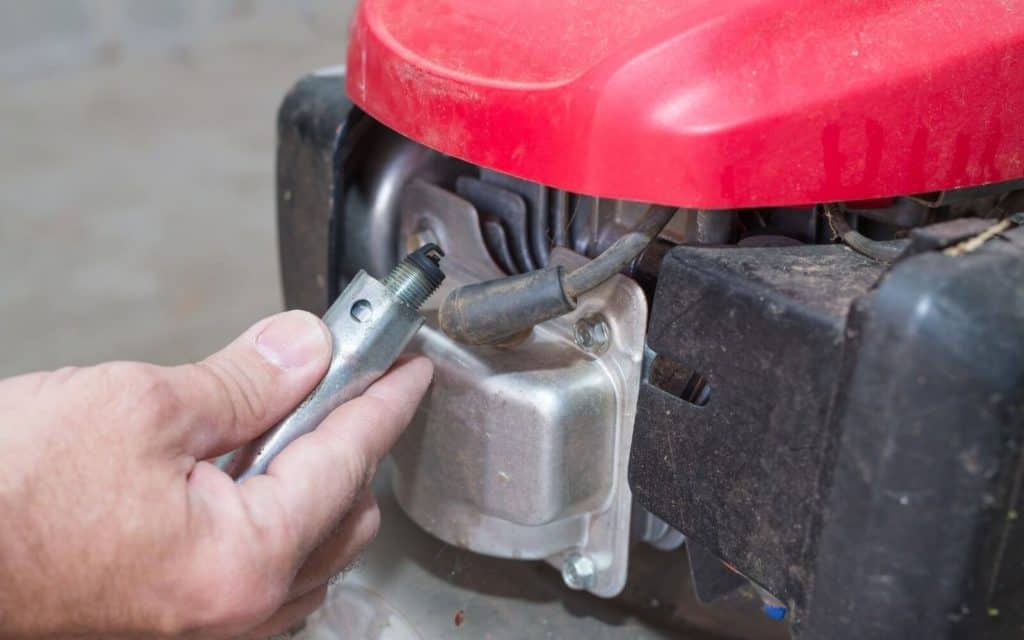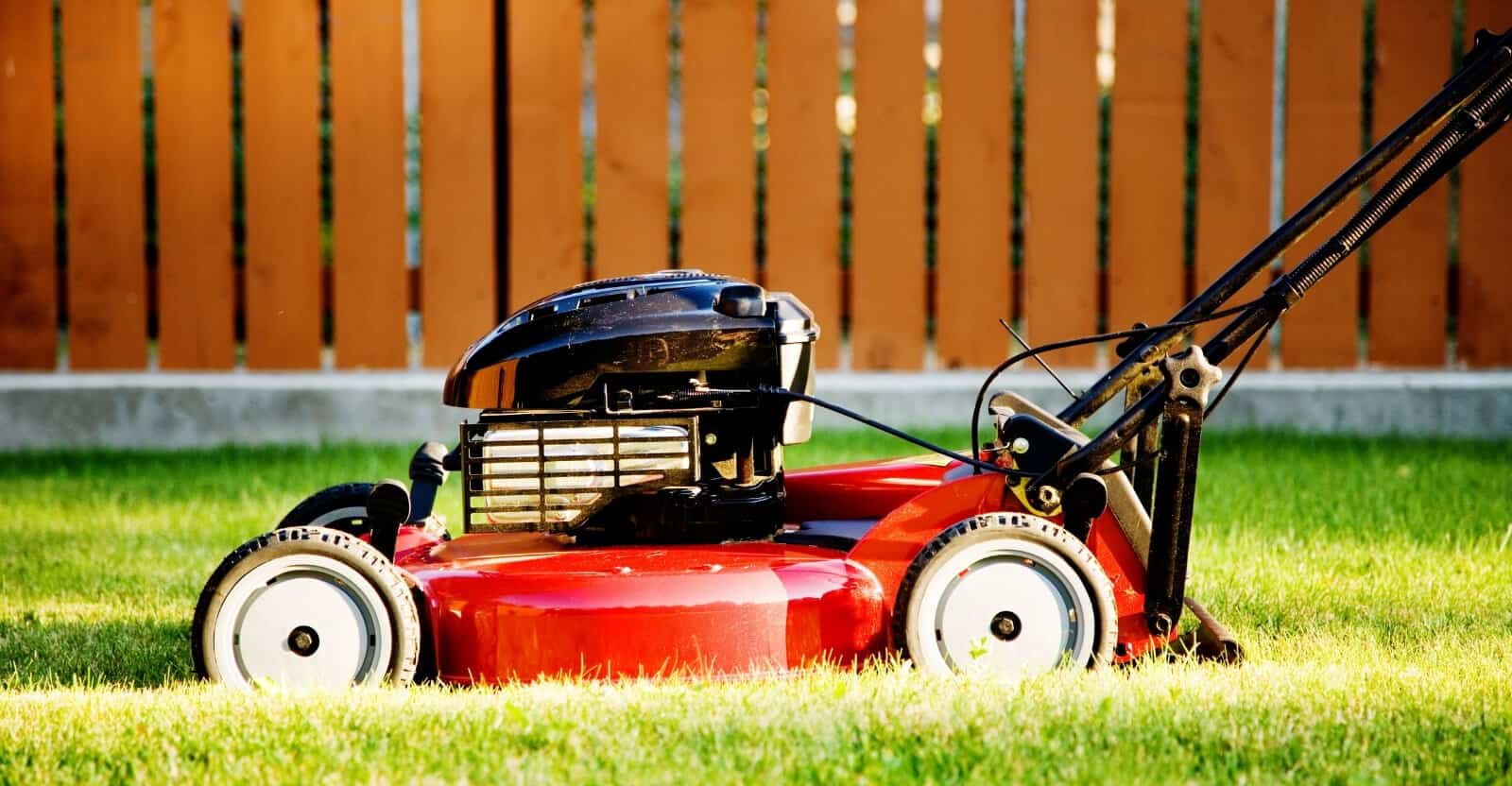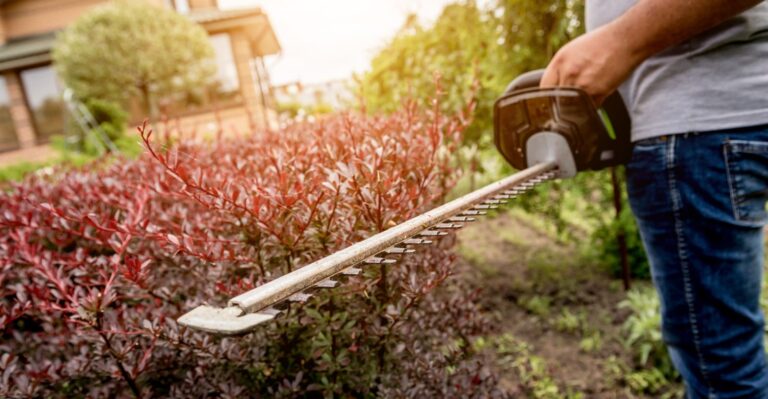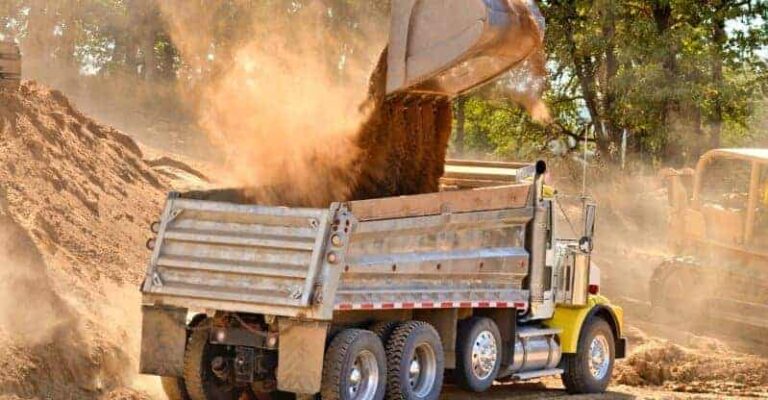Amazon has put together some great Home Gift Deals – save money and get your shopping done at the comfort of your home! Click here to see deals on Amazon
It’s no secret that lawnmowers need to be maintained. It should be cleaned and oiled often, and you should change the gas and oil regularly. But many new and experienced gardeners often find trouble starting their lawnmower that has been sitting in storage or not used for a while.
If you want to know how to start a lawnmower that has been sitting, I have included several troubleshooting steps to fix it on your own. This may sound like a daunting task, but the problem is simple to resolve in most cases.
How do I get my lawn mower to start after sitting?
There is no doubt that it can be frustrating when your mower won’t start after sitting for an extended period. A few common causes may prevent your mower from starting. However, you can take some preventive steps to avoid these issues in the future.
When ready to start the mower, first prime the engine by pressing the priming bulb three or four times. Most mowers will have a display glass window to check the fuel level. Then turn on the choke and attempt to start the engine. If it doesn’t start, turn off the choke and try a few more times again.
Also, most mowers have a safety switch to prevent any accidents. Refer to the user manual to ensure the safety switch isn’t engaged.
Before you dig deeper into troubleshooting steps, change the fuel, clean the oil and air filter and try starting the mower. If it still won’t start, a dirty carburetor is the most common culprit for the lawnmower to not start after sitting for a while.
You need to clean the carburetor and remove any oil or gunks deposited inside. You should also refer to the lawnmower owner manual to clean the carburetor.
Note:
When working with a gas lawn mower, fuel such as gasoline is highly inflammable. Make sure you don’t light cigarettes or have any source that could cause a spark. It’s preferred to troubleshoot in an open environment for proper ventilation.
Let’s dig deeper to troubleshoot a lawnmower that won’t start after sitting all winter.
Check the fuel

Any leftover gas in the lawnmower for more than a month becomes stale. A stale gas won’t ignite appropriately inside the engine. You should remove the old gas by tipping the mower tank or siphoning it carefully.
Store the old oil in a container to dispose of safely. Fill up the gas tank with fresh fuel and try starting the mower again. Some experts recommend emptying the fuel tank when you’re ready to store the lawnmower for the winter. This isn’t recommended as it causes the moisture to build up inside the empty fuel tank and risks corrosion.
You can buy TruFuel (Amazon link) from a local hardware store or gas station with no ethanol added. The ethanol-made fuel usually gunks up carburetor over time and makes it difficult to start the mower.
You can fill up the mower tank with TruFuel when ready to store it for winter. You can use it for any two-cycle or four-cycle engine.
If you can’t find TruFuel, you can add some fuel stabilizer that prevents gasoline from getting stale. It helps run the mower clean while keeping the engine safe.
Replace the engine oil
The engine oil is a viscous fluid that lubricates the engine parts to help it slide smoothly at the right speed, ensuring that the mower moves efficiently. Without this oil, the mower will slow down, and the piston will have a hard time spinning, or the engine won’t start at all.
There are different types of engine oil available in the market. A good quality engine oil won’t leave any residue inside.
Like your vehicle, you should regularly change the engine oil. Expert recommends changing engine oil twice a year. You can replace it once at the start of the season and second before you’re ready to store it for the winter.
If you find the engine to crank and produce lots of white smoke before stalling, it indicates bad engine oil that needs to be replaced. You can also visually inspect the oil, and if it’s very thick and dark, it’s time to get it changed.
Change the air filter

It’s always advisable to change the air filter before starting the lawnmower that has been stored for winter.
The air filter keeps dirt and debris from damaging the engine. If it’s not replaced, it will lead to wear and tear on your lawnmower engine and difficulty starting. If you find the engine to crank but stall afterward, it’s a sign of a dirty or clogged air filter.
You should replace the air filter once a year. The air filter isn’t costly and is easy to replace. Depending on the mower type, different types of air filters are available. You should check the owner manual to know the correct type and size of the air filter for your mower.
Removing the air filter is a relatively simple process. First, find the air filter box on your lawnmower. Remove the old air filter from the box and discard it in a trash can.
Take the new filter out of its package and place it inside the box. Then, replace the lid on top of the container and close it up with a screwdriver or wrench.
Check the sparkplug

If your lawnmower is sitting for too long, the spark plug could become dry and no longer conduct electricity. Fortunately, changing a spark plug is an easy fix that anyone can do in a few minutes with just a pair of pliers and a screwdriver.
You can locate the spark plug quickly as it will have a thick black rubber cover to keep the dirt and dust out with a wire connected to it. You can remove the spark plug with the right size socket wrench.
After removing the socket, check for any corrosion or damage at the spark plug tip. Visually inspect the electrode for any dry deposit, indicating improper fuel burning.
A wet sparkplug tip indicates excess fuel entering the burning chamber, resulting from a faulty choke or broken seal.
The easiest way to fix the problem is to replace the spark plug. You should look for the model number printed on the spark plug itself or refer to the owner manual to find the correct specification as per your mower.
The spark plug is a small and essential part of a lawnmower, and it often goes unnoticed when we’re inspecting the machine. If it’s not cleaned or changed when needed, it may produce an insufficient spark and make the mower hard to start.
Clean the carburetor

After going through the above troubleshooting steps, if you have a lawnmower that won’t start, the problem often lies with the carburetor. You may need to clean or replace it to start a mower.
Often, if you find the engine turns over but doesn’t start, then your carburetor may need to be cleaned. You may need a small screwdriver to open the carburetor. You should refer to the owner manual or watch some YouTube videos to know the location and the steps to open the carburetor.
Place a small catching bowl under the carburetor to prevent any fuel from spilling on the ground. Once completely removed from the engine, soak the carburetor in vinegar for an hour.
The vinegar helps remove gunks and debris. Another option is to use a carb cleaner that you can buy from a home hardware store or order it online.
You can spray it directly on the carburetor, ensuring not spray it on the close-by air filter.
Replace the fuel pump
The gas and oil mixture in a lawnmower’s fuel pump can get dirty and clogged. If this happens, the lawnmower won’t start. The fuel pump pushes the gas from the tank to the engine through multiple ports.
Stale gas in the mower or too much oil can leak into the fuel pump. A flooded or clogged fuel pump won’t supply proper gas to the engine. A dirty fuel pump can cause the mower to stall or not start at all. Cleaning your fuel pump is an easy process that will help get the mower started.
The first step to clean the fuel pump is to remove the gas cap and clean any debris on top of it. Next, locate the intake tube leading up to the pump and spray a small amount of carburetor cleaner. Ensure it flushes through the tube to clean any buildup.
Also, check the plastic fuel line pipe for any kink or debris obstructing the fuel. Use a clean cloth to clear any oil buildup around the fuel pump.
Tight the brake cable
A loose brake cable is often overlooked when the lawnmower won’t start. The cable pulls on the handlebar when the mower is in use. A defective or loose cable makes it hard for the lawnmower to start.
It’s possible that the brake cable needs to be tightened. This is because the cable may have become loose, worn by the cable’s end down, and need to be replaced. The brake cable should be tightened or replaced before you attempt to start the lawnmower.
You should check the tension on the brake handle by pulling it and observing any slack in the cable. If tightening the brake cable doesn’t fix your problem, you may need to replace it. Replacing your brake cable will typically take less than 5 minutes and should only cost about $10-$15.
Check Flywheel key
The flywheel is the circular metal disc that connects the lawnmower blades to the engine. If it’s broken, then your lawnmower won’t start. Often mower hitting any stump or rock can crack or break the flywheel.
You can fix this problem by removing your old flywheel and replacing it with a new one from your local hardware store. When removing the flying wheel, you should use a clamp to keep it secure and safe.
Clean up any grass clippings or dirt from the flywheel using a paintbrush. If you need to replace the flywheel, it’s essential not to throw away your old flywheel until you’ve confirmed that you have indeed fixed it.
Replace the Deadman control
A lawnmower has many essential parts to function correctly, one of which is the deadman’s control cable. This cable provides safety by stopping the engine if you need to step away from the machine for any reason.
If this cable snaps or becomes disconnected, you can replace it with a new one without too much trouble. The cable needs to be held in place for the engine to start.
It connects to the engine’s ignition system that sends the current to the spark plug for internal combustion. Replacing any broken or damaged deadman control system allows the mower to start.
Check starter battery
If your mower has an electric starter, you should check the battery first to ensure it’s fully charged. Most mower batteries can last for several years, but they reduce the ability to hold a charge as time goes by.
Cold weather in the winter season often degrades the battery holding charge capacity. You can try recharging batteries before attempting to start a lawnmower.
If you see white corrosion at the connector or the battery won’t hold a charge after several hours of charging, you need to replace the battery.
Conclusion
In conclusion, if the lawnmower won’t start after sitting all winter or sitting for a while, the first thing to do is pour some clean fuel into the carburetor and pull the starter cord. If this doesn’t work, check the spark plug and clean it if necessary, then replace it with a new one before trying again.
If all else fails, take it to a certified repair shop.

Don’t forget to share this post







